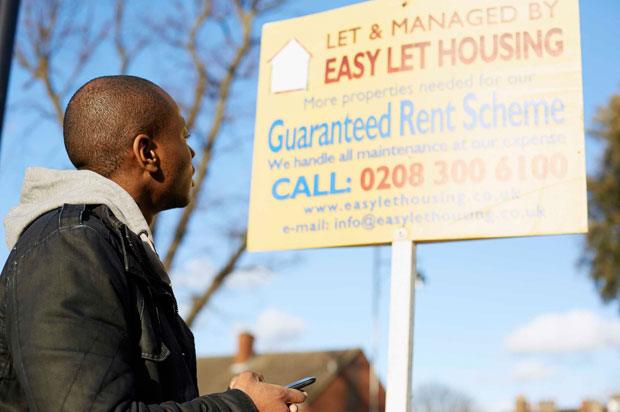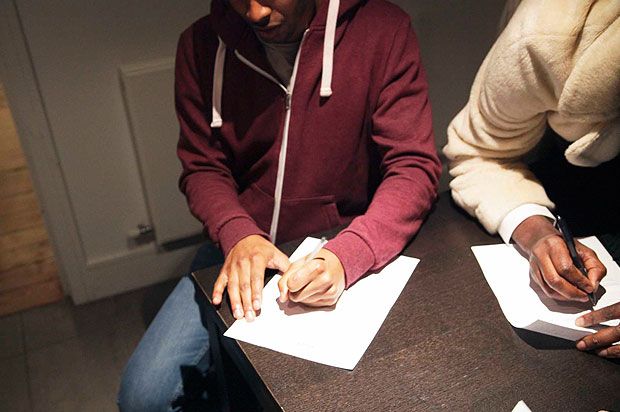Finding a place to rent
Finding somewhere to live can feel impossible! The Mix takes you through the renting minefield step by step, so you know what to look for.

Finding somewhere isn't always easy
Where to start looking
There are countless ways to search for a suitable place. Here are some of the best:
Online
This is the fastest way to see what rented homes are available in a particular location. There are plenty of websites that list properties for rent as well as for sale; try Rightmove.co.uk, Propertyfinder.com and Globrix.com. You will be able to enter your criteria – such as whether you want a house or flat, the number of bedrooms, whether you want a garden and even if the landlord allows pets.
Letting agencies
Searching online will usually lead you to a letting agent; most of whom are just estate agents that also have a letting department. While you won’t be charged to simply enquire about their properties, once you have decided you’ll take one it’s likely that you will be charged a fee – usually in the region of £350 – in exchange for them taking it off the market.
Personal contacts
Informing friends, family and work colleagues that you’re looking for a place to live is also a good idea. Why? Because you can trust them to be honest and they may know of forthcoming vacancies that have yet to be advertised, putting you a step ahead.
Local newspapers/magazines
Local press often carries a daily or weekly section on rented accommodation in the area. Copies will be available in libraries, but most local papers are now available online. Whichever means you employ though, spring into action as soon as the edition is published, as the good homes tend to be snapped up quickly. As a rule of thumb, anything described as a ‘luxury penthouse’ with a cheap price tag that’s still available after a couple of days probably isn’t all it seems.
Shop windows/notice boards
Try looking at notice boards in community centres, libraries and newsagents. If possible, check the date the advert was put up otherwise the place may have already been let.
Placing your own advert
You can do this the other way around, too, by putting an advert in a paper or a shop window, detailing what type of rented place you are looking for and how much rent you can afford.
Advice centres/day centres/accommodation registers
These may keep a list of local private landlords or letting agents. They may have been contacted directly by landlords with property to let so definitely worth a go.
View several properties and keep an open mind – sometimes the ones you fail to take notice of are the most suitable.
Looking around potential properties
It’s a good idea to view several properties and keep an open mind, as sometimes the ones you fail to take notice of are the most suitable after all. When you go on a viewing, either the lettings agent or landlord will usually accompany you. Sometimes, however, they may have organised for the current tenant to show you around instead. When you get there, jot your thoughts down on a piece of paper so you can refer to them later.
Make sure you check:
- The flat is secure and all the locks work, especially if it’s in a dodgy area.
- Ask to be shown how the heating works.
- Switch the lighting on and off – does it all work and is there enough?
- Check the plumbing by running a few taps and flushing the loo.
- Check the windows, whether they open easily and whether they have double glazing.
- If the flat is furnished, look at the condition of the furniture and note any disrepair in the property, also check whether there’s enough storage space.
- Check the Energy Performance Certificate (The law states that all landlords should have one) which will give you a rough indication of the cost of the bills. But ask the current tenant – if they are present – what they actually pay monthly, too.
- The law also requires that landlords have a gas safety certificate in place which should come from a Gas Safe Register (formerly Corgi) engineer, and must be renewed annually.
- Try to find out what the landlord is like, ask the current tenants or ask to meet him.
- Here’s a helpful checklist from My Urban Jungle
Moving in
When you have decided on a property you will need to pay a deposit, which is usually six weeks’ rent. Since April 2007, landlords must put their deposit into a government-authorised tenancy deposit protection scheme rather than in their own bank account.
You will also be given an inventory that details all items within the property and their condition. Check this through thoroughly and make sure you agree.
Before you’re given the keys you’ll need to sign an Assured Shorthold Tenancy Agreement, which sets down the terms and conditions of the tenancy. Of particular note here is the minimum term you will have to stay for (usually 12 months; and how much notice you will need to give (usually one or two months). Sometimes there will also be a break clause of six months where you will have an opportunity to leave.
Next Steps
- Shelter's advice website for young people offers help with housing problems and a free helpline 0808 800 4444. If you're in Scotland, use http://scotland.shelter.org.uk/ instead.
- Chat about this subject on our Discussion Boards.
By
Updated on 29-Sep-2015
No featured article









